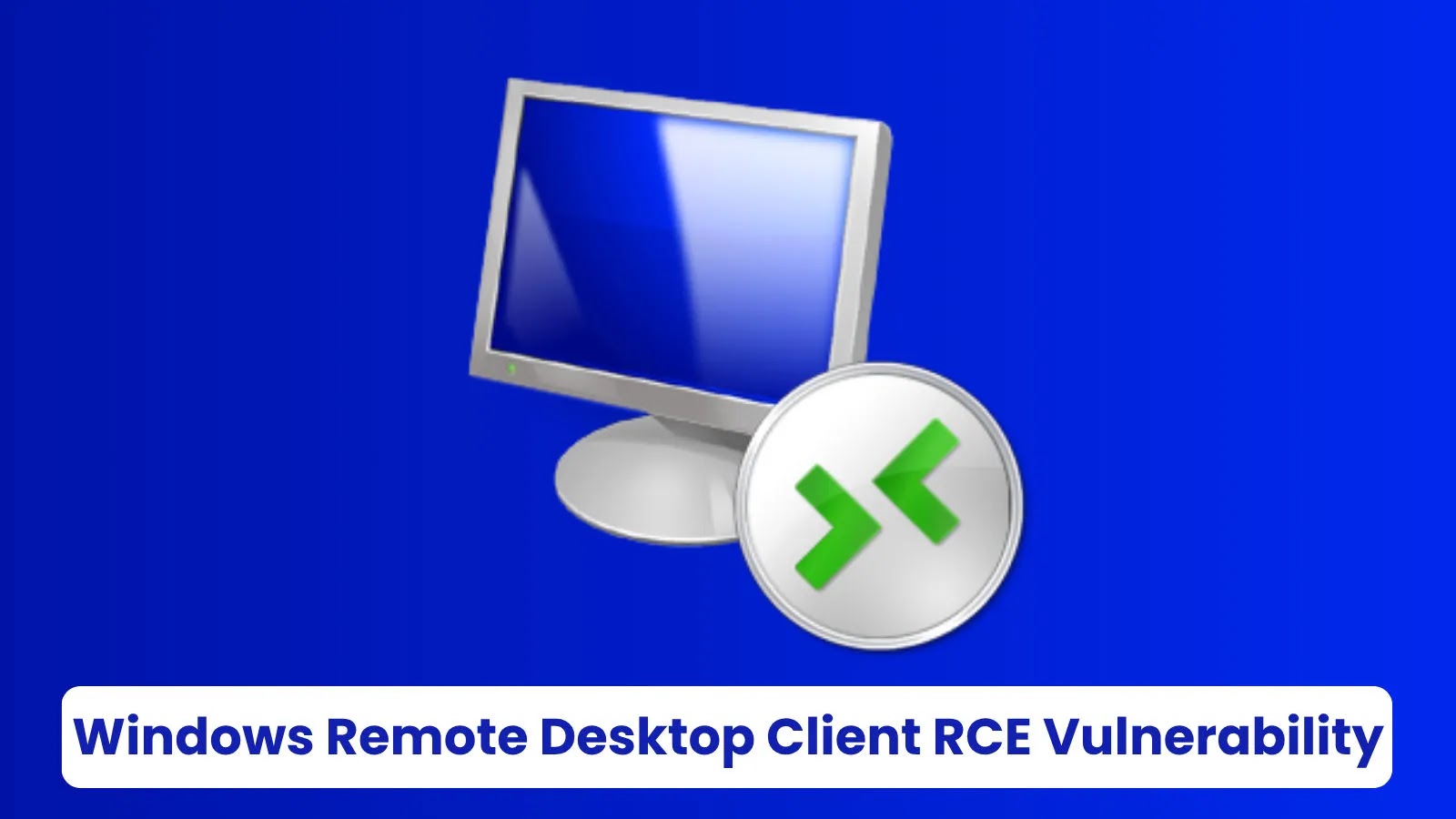
Windows Remote Desktop Client Vulnerability Let Attackers Execute Remote Code
Remote Desktop Protocol (RDP) is an indispensable tool for countless organizations, enabling seamless remote work and IT administration. However, the convenience it offers can quickly become a critical security liability when vulnerabilities emerge. Recently, Microsoft patched a significant flaw in its Windows Remote Desktop Client, a vulnerability that could have allowed attackers to execute malicious code on victim systems. This isn’t just another patch; it’s a stark reminder of the persistent threats lurking within essential infrastructure tools.
Understanding CVE-2025-58718: The Core of the Vulnerability
On October 14, 2025, security researchers disclosed CVE-2025-58718, an “Important” severity vulnerability affecting the Windows Remote Desktop Client. This flaw is rooted in a fundamental programming error known as a use-after-free vulnerability. In simple terms, a use-after-free error occurs when a program attempts to use memory after it has been freed, potentially leading to unpredictable behavior, including the execution of arbitrary code.
While the specifics of the exploit chain were not fully detailed in the initial disclosure, the implication of a use-after-free vulnerability in a client-side application like the Remote Desktop Client is significant. An attacker could craft a malicious RDP server or intercept an RDP connection to trigger this flaw, subsequently gaining control over the client machine.
The Threat Landscape: Why This Matters
Despite not being exploited in the wild at the time of disclosure, the potential impact of CVE-2025-58718 is considerable. The Windows Remote Desktop Client is ubiquitous, used by millions globally. A successful exploit could lead to:
- Remote Code Execution (RCE): Attackers could run arbitrary commands on the victim’s system, leading to data exfiltration, malware deployment, or complete system takeover.
- Lateral Movement: Once a single RDP client is compromised, attackers can use it as a pivot point to move deeper into the internal network, compromising other systems and services.
- Persistent Access: RCE often provides avenues for establishing persistent backdoor access, making detection and eradication more challenging.
- Data Breach Potential: Compromised systems frequently open doors to sensitive data, leading to compliance violations and significant reputational damage.
The “Important” severity rating from Microsoft reflects this substantial risk, emphasizing the urgent need for mitigation.
Remediation Actions: Securing Your RDP Clients
Addressing CVE-2025-58718 and similar RDP client vulnerabilities requires immediate and proactive measures. Organizations must prioritize patching and uphold strong security hygiene around their remote access infrastructure.
- Apply Microsoft’s Security Updates: The most critical step is to deploy the security updates released by Microsoft. These patches directly address the use-after-free vulnerability in the Remote Desktop Client. Ensure all Windows systems, especially those where users connect to RDP servers, are updated.
- Implement Network Level Authentication (NLA): NLA requires users to authenticate before establishing a full RDP session, mitigating certain pre-authentication vulnerabilities. While this specific CVE is client-side, NLA adds a crucial layer of security to RDP environments generally.
- Least Privilege Principle: Ensure that users connecting via RDP operate with the minimum necessary privileges. This limits the damage an attacker can inflict even if a client-side vulnerability is exploited.
- Robust Endpoint Detection and Response (EDR): Deploy and maintain EDR solutions on all endpoints. These tools can detect suspicious activities indicative of attempted exploitation or post-exploitation compromise, such as unexpected process creation or network connections.
- Regular Vulnerability Scanning: Conduct regular scans of your internal and external networks to identify unpatched systems and other potential weaknesses.
- User Training and Awareness: Educate users about the dangers of connecting to untrusted RDP servers and the importance of reporting suspicious activity. Phishing attacks can sometimes trick users into connecting to malicious RDP endpoints.
- Monitor RDP Traffic and Logs: Implement comprehensive logging and monitoring for RDP connections. Look for unusual connection patterns, failed login attempts, or connections from unexpected geographic locations.
Security Tools for RDP Environment Protection
Leveraging appropriate tools is a key component of a robust RDP security strategy. Here are some essential categories and specific examples:
| Tool Category | Purpose | Example Tool (with link if available) |
|---|---|---|
| Vulnerability Management | Identifies unpatched systems and known vulnerabilities, including RDP client flaws. | Tenable Nessus (https://www.tenable.com/products/nessus) |
| Endpoint Detection & Response (EDR) | Monitors endpoints for malicious activity, detects exploits, and enables rapid response. | CrowdStrike Falcon Insight (https://www.crowdstrike.com/products/endpoint-security/falcon-insight-xdr/) |
| Security Information and Event Management (SIEM) | Aggregates and analyzes security logs from RDP servers and clients for threat detection. | Splunk Enterprise Security (https://www.splunk.com/en_us/software/splunk-enterprise-security.html) |
| Patch Management Software | Automates the deployment of security updates across an organization’s device fleet. | Microsoft Endpoint Configuration Manager (https://learn.microsoft.com/en-us/mem/configmgr/) |
| Network Access Control (NAC) | Enforces security policies for devices attempting to connect to the network, including RDP access. | Cisco Identity Services Engine (ISE) (https://www.cisco.com/c/en/us/products/security/identity-services-engine/index.html) |
Conclusion: The Imperative of Vigilance
The discovery and patching of CVE-2025-58718 serve as a critical reminder: even the most foundational tools demand constant security scrutiny. A vulnerability in a widely used client like the Windows Remote Desktop Client carries significant risk, capable of undermining an entire network’s security posture. Prioritize applying security patches, enforce strong access controls, and continuously monitor your systems. Maintaining a proactive and multilayered security strategy is the only effective defense against the evolving landscape of cyber threats targeting essential services.





